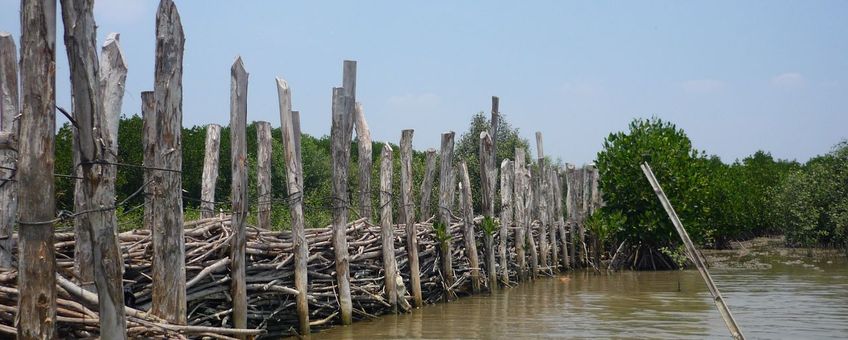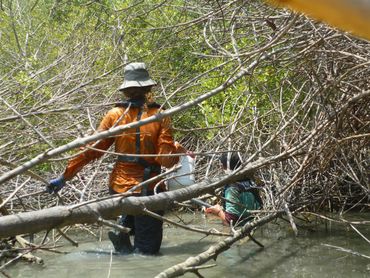
Insights on mangrove restoration for coastal protection
NIOZ Royal Netherlands Institute for Sea ResearchMangroves are tropical forests that grow on the boundary between land and sea. The mangrove trees can withstand frequent tidal flooding with the help of aerial roots. These dense forests full of aerial roots slow down waves and waterflow, and in this way increase the flood resilience of low-lying coastal areas.
Vulnerable coastlines
Unfortunately, precisely in these densely populated regions mangroves have been cleared to free up land for other uses such as aquaculture. These coasts have now become vulnerable to erosion. With sea levels rising, restoring mangroves has become increasingly important to protect these densely populated coastlines.
“I had visited this region during my studies in 2015, and I saw how much the people suffered from coastal erosion and frequent inundation,” says Van Bijsterveldt. “Sometimes the coast eroded hundres of meters per year, and entire villages were lost to the sea. I wanted to help restore the protective mangrove forest, and to do that, we first needed to understand how the system works.”
Offer hope to rural coastlines
In her research on mangroves, Van Bijsterveldt has delved into the critical question of how to restore these invaluable ecosystems for effective coastal protection. Her findings have the potential to offer hope to rural tropical coastlines grappling with sea level rise, erosion, and pollution.
Water, sediment, and vegetation
Collaborating with fellow PhD researchers from civil engineering backgrounds, Van Bijsterveldt tried to unravel the complicated relationship between water, sediment, and vegetation along rapidly eroding coastlines. The team's collective efforts aimed to understand the mechanisms at work, making effective mangrove restoration possible.
Van Bijsterveldt's research has yielded important insights. It was discovered that mangrove forests can be successfully restored in areas designated for coastal protection. Provided that critical baseline conditions are created, such as bed-level, mudflat width and sedimentation rate, young mangroves can successfully establish. Remarkably, mature mangroves showcased resilience to human-induced stressors, including pollution, and exhibited a high level of tolerance to rapid sea level rise when an adequate supply of sediment was present.
Global challenges due to climate change
Van Bijsterveldt’s research has broad implications for the global challenges posed by climate change, biodiversity loss, and the need for societal change. Her work provides a glimpse into the future for poor rural areas on the coast struggling with ongoing pollution and sea level rise. By showing the intricate dynamics between mangroves and their environment, Van Bijsterveldt's findings contribute to develop effective strategies for mitigating the impacts of these pressing issues.
Text and photos: NIOZ


